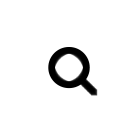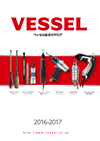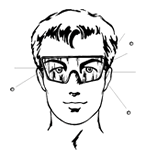SAFETY
| CE |
 The CE marking is used for EU market supervision. By affixing the CE mark to a product, the manufacturer declares that it complies with EU requirements, and the product is thus able to move freely within the European market. |
|---|
FOR SAFETY USE OF AIR NIPPERS
| For All Tools |
- Do not use any tool if cracked, chipped,worn, deformed or otherwise not in perfect working order.
- Do not use any tool for anything other than its specified inherent purpose. |
|---|---|
| AIR TOOLS |
Before operation
Before operation Be sure to connect the air joints and hose securely to the tool!Otherwise, accidental disconnection of the hose or air leakage may result, causing serious accidents.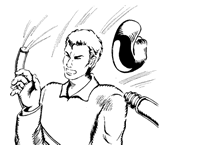
Check your tool carefully before in use!Should the tool itself or its accessories be found defective, stop using the tool immediately for check-up.
Make sure the tool is applicable for the working purpose!Contact your agent or manufacturer directly when the details found not cleared even after checked in attached instruction manuals.Work Environment
Do not use anything other than plain air as the drive medium!Air tools are driven by compressed air. Use of high pressure gases (oxygen, acetylene, propane, etc.) other than air is dangerous and can lead to explosion.
Use tools at an appropriate air pressure!Inappropriate pressures not only cause early wear and damage to tools but can also lead to accident.
Use clean, dry compressed air!Dust and drainage can lead to clogging and accident. Install a pressure regulator.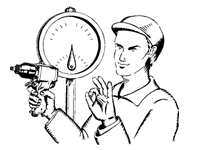
Oil your tools!Failure to oil tools not only causes rust, wear and breakdown but can also lead to accident. Replenish oil from the oil supply port and rotate the tool for about 3 sec. under no load 2 or 3 times, before and after use.Work Environment and Dress
Keep the work area clean and brightly lit!Dark or disorderly work environments can lead to accident. Provide proper lighting and keep the area clean and tidy.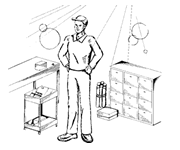
Dress for work!Do not wear baggy clothes, necklaces, etc. Wear only attire suited for working. Tuck long hair up under a hat or take other measures to prevent entangling in tools.
Wear protective gear!Wear protective gear suited for the work including a helmet, protective goggles, earplugs, dust mask, safety shoes, etc.Precautions in Use
Shut off air whenever stopping work!Should the tool operate unexpectedly, it could lead to accident. Also, if trouble occurs, shut off air supply instantly and stop working.
Do not use hand tool application tools!It easily causes the damage of tip tools and serious accident. Be sure to choose the proper bits and adapters for air tool.
Stop the tool before mounting or replacing bits!Stop the tool and shut off air supply before mounting bits or changing the direction of rotation. Also, before starting the tool, check the direction of rotation.
Keep hands away from rotating parts!Contact with rotating parts is very dangerous and can lead to accident. Also, the bit and screw can become hot during tool use; therefore do not touch either immediately after use.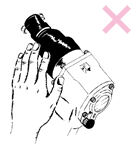
Avoid the exhausts!Avoid the exhausts from your eyes and ears either directly or indirectly.Installing the tip tools- Before tools put on services for installing or replacing the tip tools (bits, sockets drills, grindstones with shanks, headcups, blades, etc.), be sure to disconnect
Air nipper and blade・Continuous use of broken blades may result in serious damage to the tools or accidents, therefore replace the blades when they arebroken. ・Replace the blade of the heat nippers after it gets cool. Be aware that they retain heat even after the power is turned off. 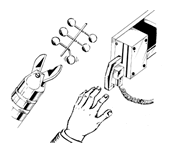
Storage- Store tools in a safe place where not exposed to dust, moisture, dewing or freezing. Repair- Do not disassemble or reassemble the machine unnecessarily, otherwise machine failure or damage to the tool may result. |
| Air Tool Peripherals |
Air Regulators3Use a 3-piece (filter, regulator and lubricator) air regulator set. The filter removes moisture and dust in the hose and prevents foreign matter from infiltrating the tool. Drain the water collected in the filter periodically. Set the regulator so that air from the compressor is delivered to the tool at an appropriate pressure. Air compressorChoose the air compressor to supply enough air pressure and flow consumption volume. Check periodically to remove the drain water to be free from rusting and possible troubles of air tools. Air couplingsA coupling is used to connect an air hose to the tool or to connect two hoses. Select couplings that ensure good airflow without pressure drops or flow rate loss. Use a hose band or nut to complete connections and prevent loosening between hoses and couplings. Air hoseAir supply hoses are made of rubber, urethane, nylon and so on. Choose the proper one by pressure resistance, length, and diameter size. Use the regulator to adjust the air pressure for tools. |

